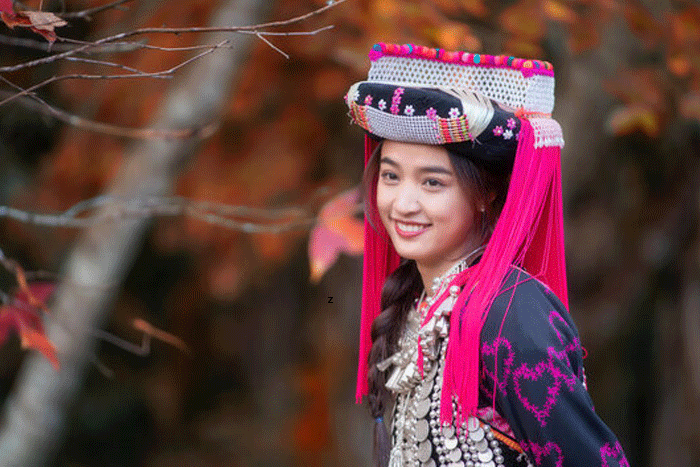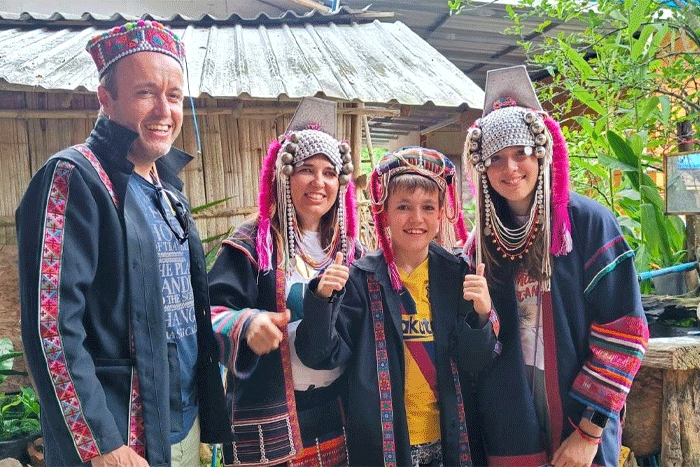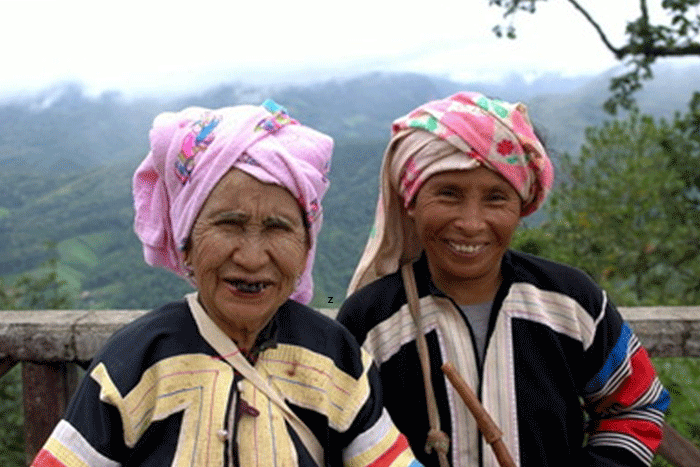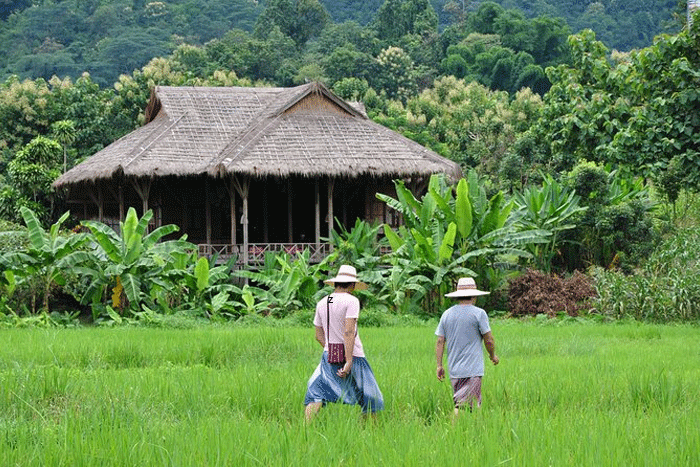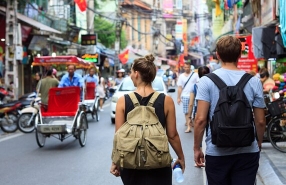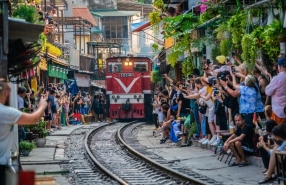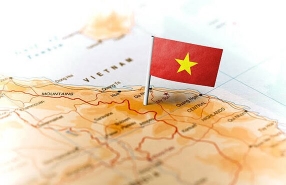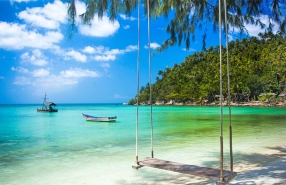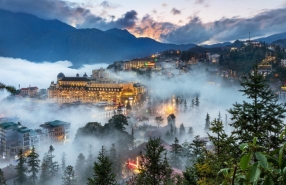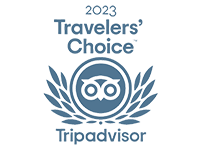Chiang Mai, the second-largest city in Thailand, is a true crossroads of cultures, particularly due to the ethnic diversity of its inhabitants. Nestled in the mountains of northern Thailand, this historic city is home to several communities, including the renowned Chiang Mai hill tribes, who have managed to preserve their ancestral traditions while adapting to the modern world. If you’re wondering what to do in Chiang Mai for an authentic experience, visiting the Chiang Mai hill tribes and discovering the ethnic minorities of Chiang Mai offers unique opportunities. For an authentic immersion in Chiang Mai’s local culture, explore the ethnic villages with Autour Asia through this article.
I. Character of the inhabitants in Chiang Mai
The inhabitants of Chiang Mai, often referred to as the Lanna, are known for their warmth and hospitality, making the city a welcoming destination for travelers. Their character has been shaped by centuries of culture and tradition.
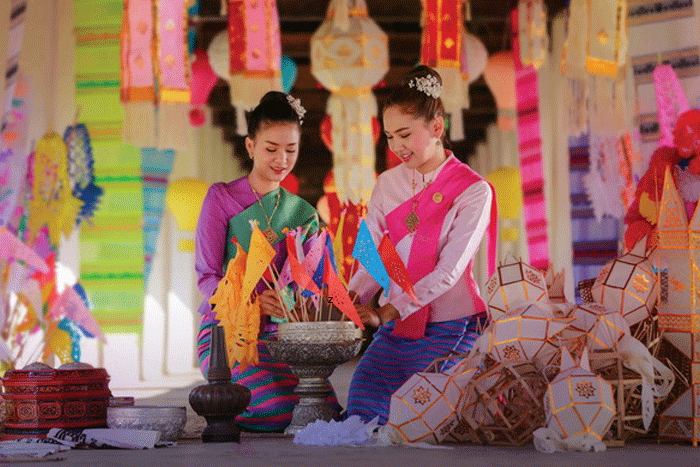
The inhabitants of Chiang Mai stand out for their warm welcome and hospitality, a trait that takes on a special dimension in this northern Thai city. Whether you’re a passing tourist or a visitor here for a cultural exchange, you’ll quickly feel at home thanks to the locals' open-mindedness, their ever-present smiles, and their enthusiasm for sharing their culture. The majority of the population is Buddhist, and this religious influence is reflected in their daily life, with Buddhist temples (wat) everywhere and practices such as meditation or morning ceremonies being integral parts of their routine. Their lifestyle is calm and relaxed, with a slower pace of life compared to larger cities like Bangkok, focused on simplicity and outdoor activities, such as hiking in the surrounding mountains or gardening.
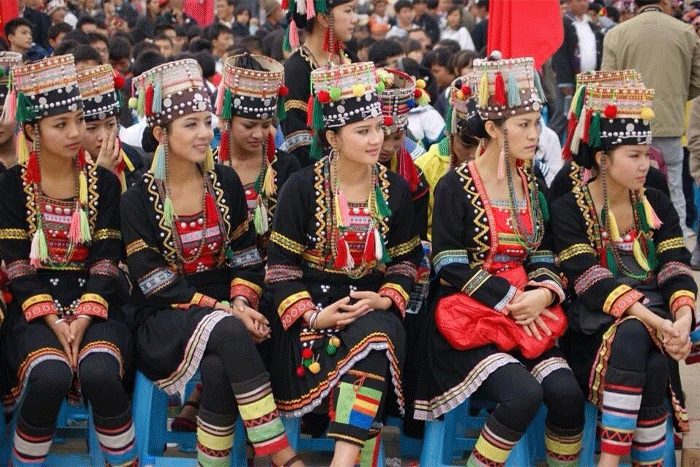
Despite modern growth and the influx of tourists, the inhabitants of Chiang Mai, including those from the
Chiang Mai hill tribes, have managed to preserve their traditions while adapting to contemporary challenges, incorporating modern technologies while maintaining long-standing practices like traditional craftsmanship or the cultivation of local organic products.
II. The ethnic minorities of Chiang Mai
Chiang Mai is home to several ethnic minorities, each with its own history, traditions, and way of life. Here’s an overview of the ethnic groups that contribute to the cultural richness of the region.
1. The Karen - The long neck tribe
The Karen are one of the most well-known ethnic groups in Chiang Mai. Originally from the mountains of Myanmar and Laos, this community is famous for its traditional costumes, including colorful long dresses and metal necklaces. Karen women sometimes wear rings around their necks, a practice that arouses curiosity and admiration. Although agriculture is their main activity, many Karen are also involved in tourism by hosting visitors in their villages.
Karen Tribe vs. Long Neck Group:
If you’ve read about Northern Thailand, you might know the Karen tribe and the Long Neck Karen subgroup. It’s important to note that the Long Neck Karen, also called Padaung, are just a small part of the larger Karen community. They’re often known for their tradition of wearing brass rings around their necks, which draws tourist attention. However, focusing only on this subgroup ignores the full richness and diversity of Karen culture.
2. The Hmong
The Hmong are another significant group in the region, with origins in China. They primarily live in the mountains of Chiang Mai and are known for their craftsmanship, especially embroidery and traditional clothing production. Their culture is also marked by a strong animistic influence and a complex system of spiritual beliefs. Hmong festivals are an opportunity for visitors to experience their music, dance, and traditional cuisine.
3. The Lisu![]()
The Lisu are present in several villages in the mountains of Chiang Mai. This group is recognized for its skills in agriculture, particularly rice and corn cultivation. They are also known for their craftsmanship, such as basket and fabric making. The Lisu have a distinctive style of dress and practice animist rituals.
4. The Akha
The Akha, originally from China, live in the mountains north of Chiang Mai. They have a strong social and family organization, and their spiritual rituals are at the heart of their community life. Akha women wear hats decorated with beads and intricate embroidery. The Akha are also involved in agriculture, mainly growing rice and vegetables.
5. The Lahu
The Lahu are another important ethnic group in the region. Like other groups, agriculture is their main livelihood. They are often associated with animist beliefs and live in remote mountain villages. Their culture is marked by spiritual traditions and rituals linked to nature.
6. The Mien (Yao)
The Mien, or Yao, are a group of Chinese origin living in the mountains around Chiang Mai. Their culture stands out for its spiritual rituals, traditional costumes, and craftsmanship, particularly the making of jewelry and fabric.
III. How to live like the locals in Chiang Mai ?
What to do in Chiang Mai to discover the local culture? If you want to experience the local life in Chiang Mai authentically, here are some tips to fully immerse yourself in the culture of the city and its inhabitants.
1. Adopt a simple and natural lifestyle
To live like a local in Chiang Mai, it's essential to slow down your pace of life and appreciate simplicity. Enjoy the many outdoor activities available, such as hiking in the mountains, biking around the city, or relaxing in one of the many Buddhist temples. Take the time to appreciate the beautiful landscapes and reconnect with nature.
2. Participate in local festivals
Chiang Mai’s festivals are an excellent way to dive into the local culture. The Yi Peng lantern festival is one of the most famous. Locals and visitors gather to release lanterns into the sky, creating a magical and spiritual atmosphere. Similarly, Songkran, the Thai New Year, is celebrated with water fights in the streets, symbolizing purification and renewal.
3. Get involved in the community life
The inhabitants of Chiang Mai value solidarity and cooperation. You can get involved in local life by participating in community activities, such as cooking workshops or volunteer projects. This will not only allow you to learn new skills but also help you build strong connections with the locals.
4. Enjoy local specialties
Chiang Mai’s cuisine is a great way to explore the local culture. Don’t miss the famous Khao Soi, a curry soup served with noodles, or the spicy Sai Ua sausage. Visit local markets to taste fresh tropical fruits and traditional dishes, and don’t forget to enjoy a local tea while chatting with the inhabitants.
5. Respect local customs
The inhabitants of Chiang Mai place great importance on respecting traditions. It’s essential to show respect for Buddhist monks by greeting them appropriately, removing your shoes before entering a house or temple, and respecting customs during local celebrations.
6. Immerse yourself in the hill tribes
Finally, for an authentic experience, visit the Chiang Mai hill tribes villages. If you’ve looked into popular tourist activities in Chiang Mai, chances are you’ve come across mentions of hill tribe visits. One of the most famous attractions is the Long Neck Karen Village, which draws many visitors. Here, you’ll discover agricultural lifestyles, traditional craftsmanship, and spiritual customs. Many travelers choose to spend a few days in these villages, participating in daily life and learning directly from community members.
Visiting hill tribes in Chiang Mai, especially the Long Neck Karen Village, presents a complex ethical dilemma. While these attractions are popular, critics argue they can feel exploitative, reducing people’s lives to staged displays rather than providing authentic cultural experiences. The feelings of those showcased in such settings are often unclear. However, for many hill tribes, tourism is a vital source of income, as they face limited job opportunities due to their lack of permanent residency and the ban on traditional slash-and-burn farming methods. Without tourist support, their financial hardships deepen. Despite these concerns, Chiang Mai hill tribes are a significant part of Northern Thailand’s cultural identity, offering visitors a unique opportunity to engage with and learn from their rich history and traditions. Balancing ethical concerns with economic support and cultural appreciation is key to responsible tourism.
Whether you choose to explore the city, discover the
Chiang Mai hill tribes, or participate in local activities, each experience will bring you closer to the authentic soul of this northern Thai region. In Chiang Mai, meeting the locals and exploring the
ethnic villages of Chiang Mai offers a unique opportunity to understand a rich and diverse culture. To discover more about Chiang Mai, feel free to CONTACT ATOUR ASIA,
Thailand Travel Agency now.
Charles Gori
5.0
Excellent
When is the best time to visit Chiang Mai and its ethnic villages?
The best time to visit Chiang Mai and its ethnic villages is from November to February, during the cool season. This period offers a comfortable climate, ideal for outdoor activities like hiking and exploring the picturesque mountains and ethnic villages. The weather is pleasant, with cooler temperatures, making it the perfect time for travelers to experience the region’s natural beauty. It’s recommended to avoid the rainy season, from May to October, as heavy rains can disrupt outdoor plans and limit access to certain areas in the mountains.
How to visit the ethnic villages in Chiang Mai?
To visit the ethnic villages in Chiang Mai, you can either book guided tours through local travel agencies or connect directly with the ethnic communities offering immersive experiences. For a satisfying experience that exceeds your expectations, please CONTACT ATOUR ASIA, Thailand Travel Agency now. These tours provide an excellent opportunity to engage with the lifestyles, customs, and traditions of the hill tribes, offering a deeper understanding of their rich cultural heritage. Many of these tours also include stays in the villages, allowing you to live alongside the communities and experience their day-to-day activities firsthand.



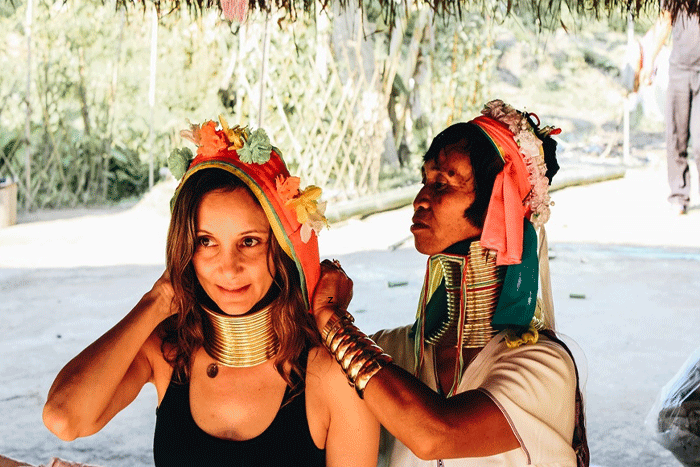
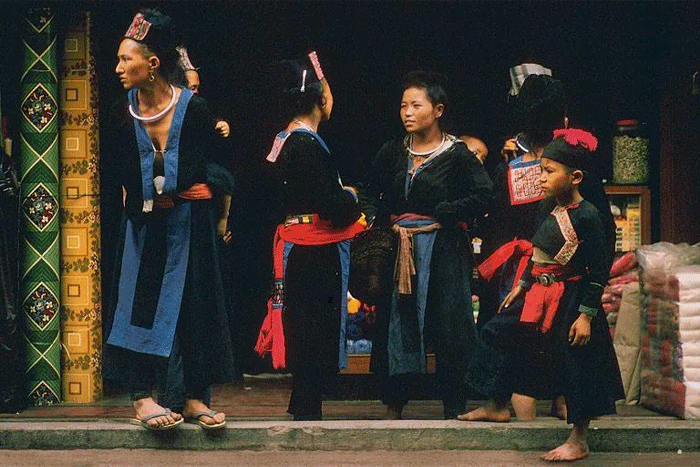
![]()
